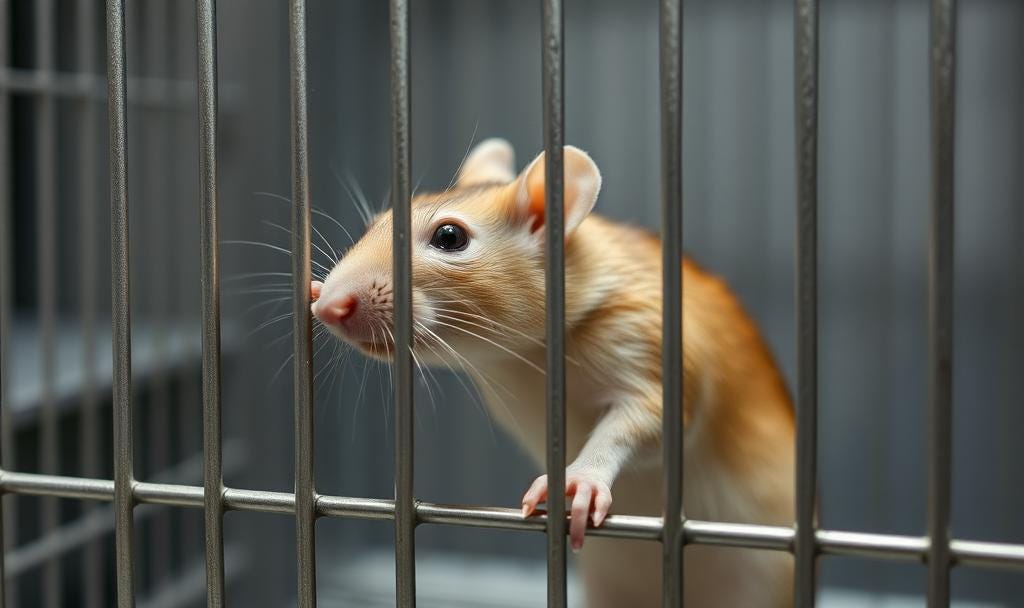Imagine yelling at a rat in a lab:
“Stop pressing the lever!”
It wouldn’t help. The rat isn’t thinking about it—it’s simply repeating a loop it learned through reward and repetition.
Now consider your own habits.
You reach for a snack after a stressful day. You open the fridge when you’re bored. You overeat at dinner, not because you’re hungry, but because that’s what you always do.
You’re not making conscious choices. You’re running a loop.
Diets don’t teach you how to change that loop. They just tell you to stop pressing the lever.
That’s why they fail. Not because you lack willpower—but because they ignore how your brain actually works.
It’s time to stop blaming yourself and start working with your biology.
The Real Reason Diets Don’t Stick
Your brain is designed to automate behavior to conserve energy. It stores repeated actions as shortcuts—especially when they produce a sense of relief or pleasure.
This happens in a part of your brain called the basal ganglia, which creates habit loops based on three parts: cue, behavior, reward.
For example:
Cue: Stress after work
Behavior: Eat a cookie
Reward: Temporary comfort or distraction
This loop gets reinforced the more it’s repeated.
The problem isn’t that the loop exists. The problem is that we try to break it using willpower instead of rewiring it with intention.
How to Rewire the Habit Loop for Healing
Your brain doesn’t respond to punishment. It responds to patterns and consistency. Here’s how to create new healing loops that stick.
1. Notice the Loop
You can’t change what you’re not aware of. Start by observing your own patterns without judgment.
Ask:
What usually triggers this behavior?
What emotion or need is underneath it?
What reward am I actually seeking—relief, energy, escape, control?
Awareness is the foundation of healing. Once you can see the loop, you can begin to redirect it.
2. Create a New Pattern
You don’t need to eliminate the cue. You just need to offer your brain a new response that delivers a similar reward.
Old habit: Stress at 3 p.m. → Reach for sugar → Feel temporary energy and relief
New habit: Stress at 3 p.m. → Go outside and take a 5-minute walk → Feel a mental reset and physical energy
The more your new behavior meets your real need, the more your brain will choose it. Not because you forced it—but because it works.
3. Make It Easy to Repeat
Repetition is what rewires your brain—not intensity.
Your brain builds habits through strengthened neural circuits. Each time you repeat a new behavior in the same context, you reinforce that pathway. The easier and more consistent it is, the faster it becomes automatic.
Set up your environment to support the new habit. Prepare healthy snacks ahead of time. Leave your walking shoes by the door. Pair the habit with something you already do, like brushing your teeth or making coffee.
Your brain prefers frictionless change. Make healing the path of least resistance.
4. Repeat Until It Becomes the Default
The more often you perform a behavior in the same context, the more control shifts from your conscious mind to your habit center. What begins as a choice becomes automatic.
This is how healing becomes effortless.
It’s not about perfection. It’s about repetition. One day at a time. One loop at a time.
Over time, the old pathways weaken. The new ones become your new normal.
You’re Not Failing—You’re Rewiring
You’re not meant to control every craving or resist every urge. You’re meant to build a new system that works for you.
Healing happens through repeated, intentional action—not through guilt or restriction.
And that means you’re never more than one healing habit away.
Let that be your starting point.
P.S. Rewiring takes practice—but you don’t have to do it alone.
Inside The Habit Healers Mindset’s Inner Circle, you’ll learn how to spot your hidden loops, design simple healing replacements, and repeat them until they become your new normal.
No guilt. No willpower contests. Just quiet, lasting change.
Let’s start your next loop today.
Join The Inner Circle Today.






More to the point what is it being eaten? Is it nutritious? Does it offer a colour palette to please the eye and enough texture to give the teeth some pleasure. Are there complex flavours and most importantly is food merely fuel grabbed while standing or dashing? The solution is to shut off the devices, prepare a meal with all who will be eating it and sit and have a civil discourse. We sometimes eat to fill a vacuum of all that is lacking, including time carved to eat well with those we love.
Your rewriting plan also speaks to adding something to your routine - positive energy instead of negative deprivation. Thank you!!